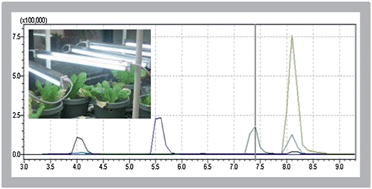Uptake of human pharmaceuticals and personal care products by cabbage (Brassica campestris) from fortified and biosolids-amended soils
Abstract
Human

* Corresponding authors
a Colorado State University-Pueblo, Biology Department, 2200 Bonforte Blvd, Pueblo, CO 81001, USA
b
Colorado State University-Pueblo, Chemistry Department, 2200 Bonforte Blvd, Pueblo, CO 81001, USA
E-mail:
chad.kinney@colostate-pueblo.edu
Fax: +1 (719) 549-2580
Tel: +1 (719) 549-2600
Human

 Please wait while we load your content...
Something went wrong. Try again?
Please wait while we load your content...
Something went wrong. Try again?
C. S. Holling, J. L. Bailey, B. Vanden Heuvel and C. A. Kinney, J. Environ. Monit., 2012, 14, 3029 DOI: 10.1039/C2EM30456B
To request permission to reproduce material from this article, please go to the Copyright Clearance Center request page.
If you are an author contributing to an RSC publication, you do not need to request permission provided correct acknowledgement is given.
If you are the author of this article, you do not need to request permission to reproduce figures and diagrams provided correct acknowledgement is given. If you want to reproduce the whole article in a third-party publication (excluding your thesis/dissertation for which permission is not required) please go to the Copyright Clearance Center request page.
Read more about how to correctly acknowledge RSC content.
 Fetching data from CrossRef.
Fetching data from CrossRef.
This may take some time to load.
Loading related content
